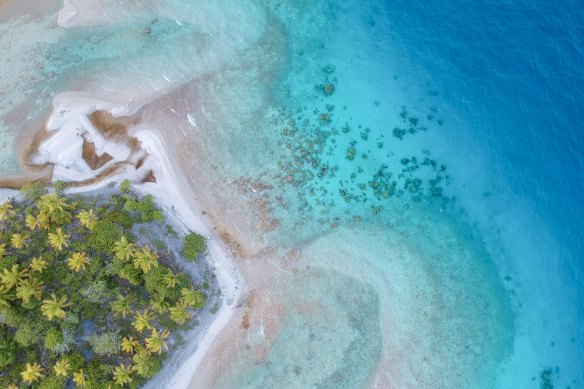
Unless you’re a keen ocean swimmer like me, you probably haven’t had much reason to think about what’s at the bottom of the ocean. But this week at COP27, an area on the deep-sea floor in the Pacific Ocean known as the Clarion Clipperton Zone, or CCZ, was at the centre of a debate that presents a paradox that will define our clean energy transition: securing sustainable clean energy, the extraction of metals to fuel that transition, and what ecosystems we are willing to sacrifice in the process. Australian miner Andrew Forrest, weighing in on the subject at Sharm el-Sheikh, urged caution in taking advantage of the zone’s potential.
The Clarion Clipperton Zone is an underwater landscape roughly the size of Europe, 11,000 metres below sea level, with mountains and valleys laced with the world’s largest deposit of potato-sized rocks called polymetallic nodules. These rocks, formed over millions of years, carry minerals such as cobalt, manganese, nickel and other rare earth minerals that are critical to the clean energy transition.

A Europe-sized section of the floor of the Pacific Ocean is a tempting repository of mineral-rich rocks.Credit:
The demand for these minerals is skyrocketing as the world’s climate ambitions increase. A 2020 World Bank Report found that the production of these minerals will need to increase by nearly 500 per cent by 2050 to meet the growing demand for clean technologies. This includes an estimated 3 billion tonnes of minerals and metals to deploy wind, solar and geothermal power, as well as energy storage in the form of batteries. By many assessments, existing mines on land will not be sufficient, and some states and mining companies are rapidly advancing their efforts to begin deep-sea mining to meet this demand.
Under the United Nations Convention on the Law of the Sea, the zone is considered the “common heritage of mankind” and, presently, commercial mining is not permitted in these waters. The International Seabed Authority – a United Nations organisation in Kingston, Jamaica – was set up under the convention to manage a regime governing the deep seabed floor. Under this regime, any mining activity requires a company to team up with a country that’s a party to the convention before making an application for a mining permit from the authority. The authority’s mandate also requires a percentage of the mining revenue to be distributed to developing nations. This has made many islands in the Pacific very popular with mining companies looking for a permit. So far, the authority has issued mining licences to Nauru, Tonga and Kiribati, which have sponsored projects for the exploration of polymetallic nodules in the zone.
The prospect of commercial mining in the zone has recently become more imminent. In June 2021, Nauru teamed up with Canadian mining company the Metals Company and triggered what is known as the “two-year rule” under the law of the sea convention, which states that if a request is made by a state, the authority shall finalise regulations for commercial mining within two years. The regulatory framework is due in June 2023 but writing the framework has been plagued with difficulties because of the significant and divergent interests of all those involved. If the regulations are approved, more than a dozen companies are expected to accelerate their explorations in the zone to industrial-scale extraction.

Andrew Forrest at COP27 in Egypt has supported a moratorium on deep sea mining.
While the processes for deep-sea mining are still being developed, the leading technology involves using specialised vehicles to rake the ocean floor to retrieve these rocks, which then get sucked up by a vacuum for the removal of the metals, with the rest flushed back into the water. Mining companies are promising to extract seabed metal with minimal damage to the surrounding environment. The CSIRO is also leading a group of scientists from Australia and New Zealand to help the Metals Company develop an environmental management plan for its project, backed by the Nauru government. But it requires one to suspend disbelief that ocean mining would be immune from some of the problems that have plagued mining on land.
Not everyone is on board. States such as Micronesia, Samoa, Fiji and Palau are calling for a moratorium on deep-sea mining until its ecological consequences can be better understood. They are backed by leaders of many developed nations, including the European Parliament, French President Macron and US President Biden.









 Add Category
Add Category